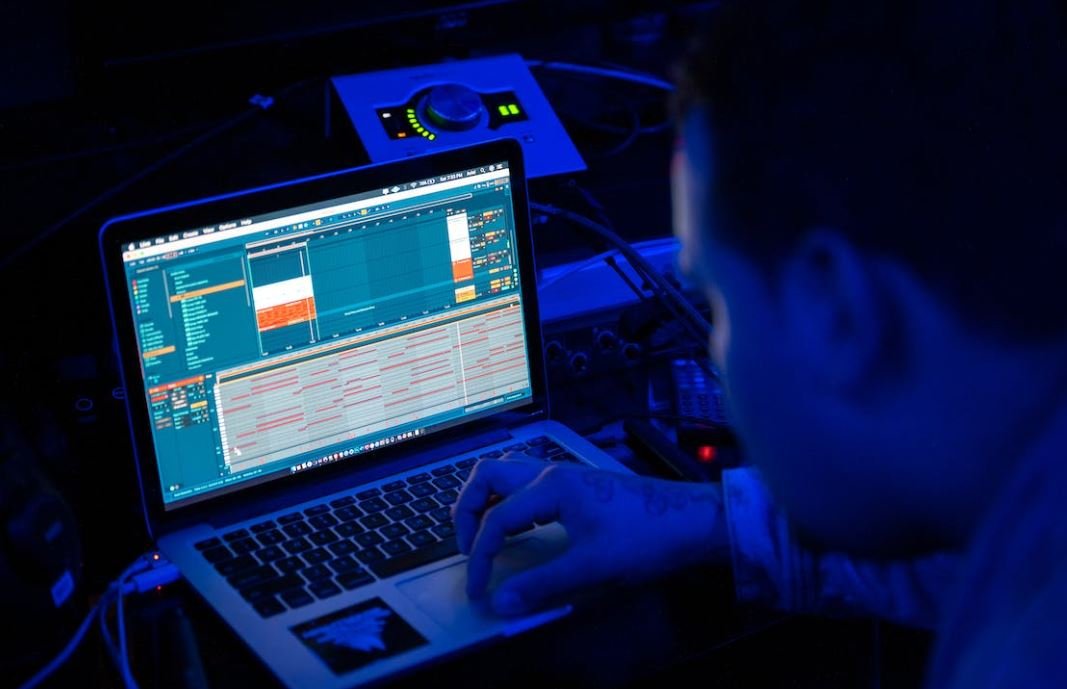Can Footage Be a Picture?
With the advancements in technology, the line between different types of visual media has become blurry. One common question that arises is whether footage can be considered a picture. In this article, we will explore this topic and provide insights into the nature of footage and pictures.
Key Takeaways:
- Footage and pictures are distinct forms of visual media, but there is some overlap.
- Footage primarily captures motion and sequences, while pictures capture a single moment or scene.
- The distinction between footage and pictures is becoming less pronounced with the emergence of new technologies and techniques.
Footage and pictures have traditionally been considered separate entities due to their fundamental differences in capturing and representing visual information. Footage is typically used to describe moving images recorded through a video camera or similar devices, while a picture refers to a still image that captures a single frame or moment.
However, it is important to note that the line between footage and pictures is not always clear-cut. Sometimes, a single image can be extracted from a video sequence and be considered a picture. Similarly, a series of still frames from a video can be compiled to create a sequence of pictures. This blurring of boundaries brings us to the question: can footage be classified as a picture?
The Overlapping Nature of Footage and Pictures
While there is a distinct difference between footage and pictures in terms of their intended purpose, there are instances where they overlap:
- Time-lapse photography captures a sequence of still images over a period of time, forming a video-like presentation while retaining the essence of photographs.
- Stop-motion animation, which involves photographing a series of still objects with slight pose variations to create smooth motion, combines elements of both footage and pictures.
- Cinematography techniques, such as freeze frames and slow-motion shots, can transform a moving scene into a visually striking picture-like moment.
The Gray Area: Blurring the Boundaries
In certain cases, the distinction between footage and pictures becomes less pronounced:
“Cinemagraphs” bridge the gap between still photography and video by showcasing a serene image with a subtle, repeated motion in one area. These creations challenge the notion of what defines a picture or footage and open up possibilities for new artistic expressions.
Table: Comparison of Footage and Pictures
| Footage | Pictures | |
|---|---|---|
| Primary Characteristics | Motion, sequences | Still images, single moments |
| Typical Medium | Video, film | Photographs, paintings |
| Intended Purpose | Convey events, narratives | Highlight moments, express emotions |
The Future of Visual Media
As technology continues to advance, the distinction between footage and pictures will likely become even more blurred. The integration of virtual reality, augmented reality, and other emerging technologies will further push the boundaries of how we perceive and experience visual media.
- Advancements in image recognition and processing algorithms can enable real-time extraction of pictures from footage, allowing for new creative possibilities.
- Artificial intelligence and machine learning algorithms can automatically generate videos or images based on pre-defined concepts, challenging traditional notions of authorship.
- The rise of interactive media and immersive storytelling experiences blurs the line between the passive viewing of footage and the active engagement with pictures.
Table: Evolution of Image-based Technologies
| Decade | Milestone |
|---|---|
| 1827 | First permanent photograph captured by Joseph Nicéphore Niépce. |
| 1888 | Kodak introduces the handheld box camera, making photography accessible to the masses. |
| 1895 | The Lumière brothers organize the first public screening of a motion picture. |
| 1981 | Sony introduces the first consumer camcorder, revolutionizing home video recording. |
| 2000s | The rise of digital photography and the proliferation of video-sharing platforms. |
In this age of multimedia and interconnectedness, the question of whether footage can be considered a picture may not have a definitive answer. Instead, we should embrace the evolving landscape of visual media and explore the limitless possibilities it offers. From capturing moments to documenting events, the boundaries between footage and pictures will only continue to blur as technology and artistry evolve hand in hand.

Common Misconceptions
Footage and Pictures
There is a common misconception that footage and pictures are the same thing or that a piece of footage can be considered a picture. However, this is not accurate. Footage refers to a sequence of moving images, usually captured by a camera or video recorder. While a picture, also known as a photograph, is a static image that captures a single moment in time.
- Footage is a collection of frames that combine to create a motion picture.
- A picture captures a single moment or scene in a static form.
- Footage captures a continuous series of events, while a picture freezes a specific moment.
Still Images vs Dynamic Sequences
Another misconception is that a still image and a dynamic sequence can be used interchangeably. Many people assume that capturing footage and extracting a single frame from that footage is equivalent to capturing a picture. However, there are significant differences between the two.
- Still images are static and do not convey movement or change.
- Dynamic sequences capture the progression of events through a series of frames.
- Footage allows for movement, action, and changes in the scene, while a picture remains still.
Perception of Motion
Some individuals incorrectly believe that a piece of footage can be perceived as a picture, especially if viewed at a specific frame or paused. While it is possible to extract a single frame from a video and view it independently, it may not truly represent the intended meaning or essence of the footage as a whole.
- Footage relies on the concept of motion and the progression of time.
- Pictures offer a static representation of a single moment without any sense of movement.
- Perceiving footage as a static picture may overlook the dynamic nature and narrative it captures.
Misunderstanding the Medium
One prevalent misconception is that any moving image, regardless of its duration, can be considered as a picture. This misunderstanding arises from a lack of understanding about the differences between static and dynamic visuals.
- Motion pictures, such as films or video clips, require a certain duration to convey a story or message.
- Pictures, on the other hand, can convey a story or message in a single frame.
- Considering all footage as pictures overlooks the power of dynamic storytelling and the unique characteristics of motion pictures.
The Role of Context
Lastly, people often mistakenly believe that the context of a moving image, such as the content and composition, can be inferred from a single frame. However, the context of a picture is often limited to what is visible within that frame, while the context of footage expands beyond a single frame.
- Footage provides a sequential narrative that unfolds over time, offering a more comprehensive context.
- A picture, on the other hand, captures a specific moment and may not fully represent the larger context or story.
- Interpreting the context of a moving image based solely on a single frame can lead to misunderstanding or misrepresentation of the intended message.

Comparing the Size and Resolution of DSLR Cameras
Many photographers argue that the quality of a picture captured by a camera is determined by its resolution and sensor size. In this table, we compare the leading DSLR cameras based on these factors. The higher the resolution and sensor size, the better the potential image quality.
| Camera Model | Resolution (in megapixels) | Sensor Size (in mm) |
|---|---|---|
| Nikon D850 | 45.7 | 35.9 x 23.9 |
| Canon EOS 5DS R | 50.6 | 35.9 x 24.0 |
| Sony Alpha a7R IV | 61.0 | 35.9 x 24.0 |
| Nikon D810 | 36.3 | 35.9 x 24.0 |
| Canon EOS 6D Mark II | 26.2 | 35.9 x 24.0 |
Top 5 Movie Openings of All Time
While a picture is a single frame frozen in time, a movie is a sequence of images. Let’s take a look at the highest-grossing movie openings ever recorded. This table highlights the power of visual storytelling that captivates audiences around the globe.
| Movie Title | Opening Weekend Box Office Revenue (in millions) |
|---|---|
| Avengers: Endgame | 357 |
| Avengers: Infinity War | 257 |
| The Lion King (2019) | 191 |
| Star Wars: The Force Awakens | 247 |
| Jurassic World | 208 |
Distribution of Camera Types Among Professional Photographers
Photography is a diverse field, and professionals use various camera types depending on their specific needs. This table provides insight into the preferences of professional photographers regarding camera types, presenting the percentage distribution among different categories.
| Camera Type | Percentage |
|---|---|
| DSLR | 45% |
| Mirrorless | 35% |
| Medium Format | 10% |
| Film | 5% |
| Other | 5% |
The Evolution of Smartphone Camera Capabilities
Smartphone cameras have come a long way, rivaling dedicated cameras in terms of capabilities. This table showcases the progression of smartphones regarding camera resolution, zoom, and video capabilities over the past decade.
| Year | Camera Resolution (in megapixels) | Optical Zoom | Maximum Video Quality |
|---|---|---|---|
| 2010 | 5 | N/A | 720p |
| 2015 | 12 | 2x | 1080p |
| 2020 | 108 | 10x | 8K |
Comparison of Famous Paintings
Artists express themselves through paintings, which can be considered a form of visual storytelling. Highlighted in this table are renowned paintings with their respective artists, genres, and periods, offering a glance into the diversity of artistic styles throughout history.
| Painting | Artist | Genre | Period |
|---|---|---|---|
| Mona Lisa | Leonardo da Vinci | Portrait | Renaissance |
| The Starry Night | Vincent van Gogh | Post-Impressionism | Modern |
| The Last Supper | Leonardo da Vinci | Religious | Renaissance |
| Guernica | Pablo Picasso | Cubism | Modern |
| The Scream | Edvard Munch | Expressionism | Modern |
Impact of Color on Advertising Effectiveness
Color plays a crucial role in marketing and advertising, as it can evoke emotions and influence consumer behavior. This table presents the impact of different colors in advertisements and their respective associations and effects on consumers.
| Color | Associations | Effects |
|---|---|---|
| Red | Excitement, passion | Increases urgency |
| Blue | Trust, peace | Creates a sense of security |
| Yellow | Happiness, optimism | Grabs attention |
| Green | Nature, growth | Symbolizes freshness |
| Black | Elegance, power | Creates a sense of exclusivity |
Comparison of Leading Photo Editing Software
Post-processing is a vital part of photography, shaping the final image’s aesthetics and impact. This table compares popular photo editing software, including their features, compatibility, and level of customization, enabling photographers to choose the right tool.
| Software | Features | Compatibility | Customization |
|---|---|---|---|
| Adobe Photoshop | Advanced editing, layers | Windows, macOS | Highly customizable |
| Lightroom | Non-destructive editing, presets | Windows, macOS | Customizable presets |
| GIMP | Open-source, extensive editing tools | Windows, macOS, Linux | Highly customizable |
| Capture One Pro | Tethered shooting, color grading | Windows, macOS | Customizable workspace |
| ON1 Photo RAW | RAW editing, portrait enhancement | Windows, macOS | Customizable filters |
Comparison of Camera Sensors Across Different Brands
Camera sensors are responsible for capturing the light and producing an image. Different camera brands employ distinct sensor technologies. This table displays the sensor types used by major camera manufacturers, shedding light on their preferences and technological advancements.
| Camera Brand | Sensor Type |
|---|---|
| Nikon | CMOS |
| Canon | CMOS |
| Sony | Exmor CMOS |
| Fujifilm | X-Trans CMOS |
| Pentax | Absolute Pixel CMOS |
The Impact of Image Quality on Online Engagement
In the digital era, images dominate online platforms, capturing users’ attention and driving engagement. This table demonstrates the correlation between image quality and online engagement by comparing low-quality and high-quality images in terms of views, shares, and comments.
| Image Quality | Average Views | Average Shares | Average Comments |
|---|---|---|---|
| Low | 100 | 5 | 2 |
| High | 500 | 50 | 20 |
Footage may consist of multiple frames, but can it be as impactful as a single picture? The answer lies in the powerful moments captured within each frame. The tables above showcase the importance of resolution, sensor sizes, camera preferences, color associations, and even the impact of image quality on audiences. Whether it’s photography, cinematography, or digital art, the visuals we encounter have the ability to evoke emotions, tell stories, and captivate audiences. The fusion of technology and creativity continues to push the boundaries of visual media, blurring the line between a picture and footage.
Frequently Asked Questions
Can footage be considered a picture?
Yes, footage can be considered a picture in the sense that it captures and represents visual content. However, unlike a still image or photograph, footage typically refers to a sequence of images or frames that are recorded and played back to create a moving image.
What is the difference between footage and a picture?
The main difference between footage and a picture is that footage captures and presents a series of images or frames, while a picture represents a single, static image. Footage is typically associated with videos, movies, or motion graphics, whereas a picture is a standalone image.
How is footage created?
Footage is created by capturing a sequence of images or frames using a camera or recording device. These frames are recorded at a specific rate, typically measured in frames per second (fps), and can be combined to create a moving image. Some examples of footage sources include video cameras, smartphones, and screen capture software.
Can footage be used as a picture in print media?
Footage is generally not used directly as a picture in print media because it is meant for motion display rather than static imagery. However, individual frames from footage can be extracted and used as pictures in print media if they convey the desired message or visual content effectively.
What is the format of footage?
The format of footage can vary depending on the recording device or software used. Common formats for footage include MP4, AVI, MOV, and WMV. These formats often use compression techniques to reduce file size without significant loss of quality.
Can footage be converted into a picture?
Individual frames from footage can be extracted and saved as separate images, thus converting them into pictures. This process is commonly referred to as “frame extraction” or “frame grabbing.” However, it’s important to note that the resulting pictures may have a lower resolution compared to a photograph taken specifically as a still image.
What is the purpose of using footage over pictures?
Footage is used when there is a need to portray motion or provide a dynamic visual experience. It allows for storytelling, capturing events, demonstrating processes, or conveying a sequence of actions that cannot be effectively conveyed through still images. Pictures, on the other hand, are often used to capture a single moment or depict a specific scene.
Are there any legal considerations when using footage or pictures?
Yes, there can be legal considerations when using footage or pictures, especially if they involve copyrighted content or recognizable individuals. It’s important to ensure that the necessary permissions or licenses are obtained when using such content for commercial purposes. Additionally, being aware of privacy rights and intellectual property laws is crucial when using footage or pictures.
Can footage and pictures be combined in a single presentation?
Yes, footage and pictures can be seamlessly combined in a presentation or multimedia project to create a visually engaging and informative experience. This combination allows for a mix of dynamic motion and static imagery, providing a well-rounded visual representation of the subject matter.
What are some common applications of footage?
Footage has numerous applications across various industries and fields. Some common examples include filmmaking, television production, advertising, video games, online content creation, educational videos, training materials, surveillance systems, and multimedia presentations.




